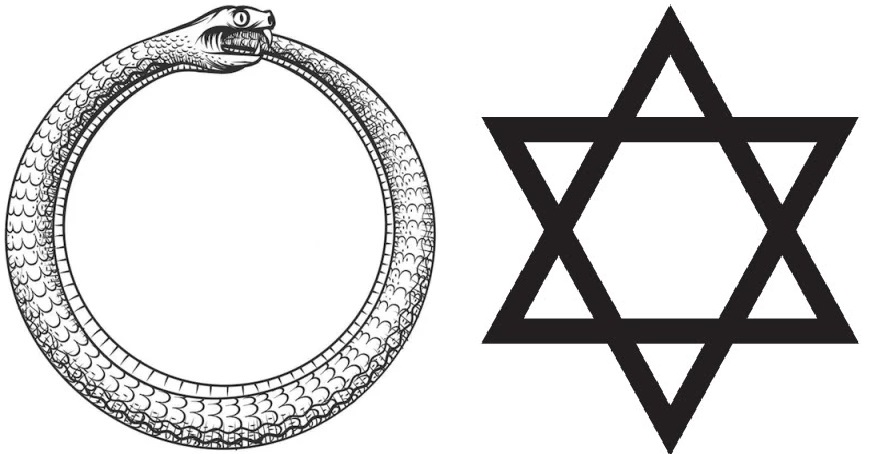
By the time most people finish high school, they know that it’s best to avoid trashy people. The problem is that, in the adult world, people engage in elaborate deceptions to hide their level of trashiness. This essay looks at five (relatively) subtle ways that you can see through the deception.
Note here that when we’re talking about trashiness, we’re talking about a person’s own level of rectitude. We’re not talking about social class, much less wealth. Low-frequency people who spread misery, fear and depression around them are trashy, no matter how much bling they may be adorned with.
For most people, it isn’t easy to determine whether another given person is trashy. Most people judge trashiness by inaccurate measures, so easily become misled. An education or a fortune doesn’t mean that one can’t be trashy. There are, in fact, several ways that a person can unwittingly reveal their inner trashiness to observers.
One of the most obvious ways to tell that someone’s secretly trashy is that their family don’t talk to them. If they have one or more adult children who don’t talk to them, chances are high you’re dealing with trash. This is especially true if the person claims to not know why their family members have stopped talking to them.
It’s not easy for someone to go no contact with a close family member. If it does happen, you can be confident that the reason was to protect against further abuse. Abusing one’s own family is perhaps the most characteristic sign of trashiness anywhere. If someone abuses their close genetic relative, it’s a certainty that they won’t feel bad about abusing you as well.
A second way is that a person is abusive to those weaker than them. The classic dating advice that if he’s rude to the wait staff he’ll be rude towards you is classic for good reason. It’s a sign of a bully. Trashy people tend to respect others only if they need to, they don’t respect by default. So if you’re getting respected by one of them now, don’t count on it lasting.
It could be countered here that abusing the weak is an obvious sign of trashiness, and that there’s nothing secret about it. That might be true, but there are a number of subtle signs of contempt and disrespect. A person’s regular use of them is a good sign that they are liable to turn to abuse. This is especially true if it’s coupled with obsequiousness towards the powerful.
A third sign is that a person chimps out whenever told no. In reality, if you respect someone’s boundaries then you also respect when they tell you no, even if you really wanted them to say yes. But some people treat being told no as if it was a grievous personal insult. This is a sign of very poor impulse control, which itself leads to many trashy behaviours.
A person who gets aggressive when told no is very likely to be the kind of person who takes advantage of others. It’s a sign that their moral development has stalled somewhere in early childhood. That kind of victimhood makes it possible for them to justify all manner of malicious actions. So be wary of anyone who behaves in such a manner, because if you ever have to assert your boundaries against them they will rage.
A fourth sign is that a person makes everything about them. Even at other people’s birthdays, weddings or funerals, trashy people act like the spotlight should be on them at all times. This powerful desire to be recognised is usually compensation for a life of little achievement. It’s often a sign of grandiose narcissism.
The classic sign that a person is a histrionic narcissist is that they seem excited when you talk about them, but then you talk about yourself and their eyes glaze over. This reveals the Main Character Syndrome that all but guarantees a person will treat those around them with undeserved contempt.
A fifth sign, perhaps the most subtle, is that a person discounts other people’s suffering. It might be a truism that tragedy is when it happens to me and comedy is when it happens to you. But a person who really acts as if other people’s suffering is meaningless is usually extremely trashy. A failure to empathise with a suffering people is a reliable indicator of trashiness.
This is especially true if their own suffering is considered important, just not anyone else’s. That’s the kind of egomania that is found among the trashiest of people. This goes triple if a person bullies people and claims that they’re joking, but get outraged when someone else “jokes” back at them.
In summary, there are several useful ways you can determine if another person is secretly trashy so that you can avoid them. These ways are mostly subtle signs of malignant narcissism.
*
For more of VJM’s ideas, see his work on other platforms!
For even more of VJM’s ideas, buy one of his books!
*
If you enjoyed reading this essay/article, you can get a compilation of the Best VJMP Essays and Articles from 2021 from Amazon as a Kindle ebook or paperback. Compilations of the Best VJMP Essays and Articles of 2020, the Best VJMP Essays and Articles of 2019, the Best VJMP Essays and Articles of 2018 and the Best VJMP Essays and Articles of 2017 are also available.
*
If you would like to support our work in other ways, subscribe to our SubscribeStar fund, or make a donation to our Paypal! Even better, buy any one of our books!



